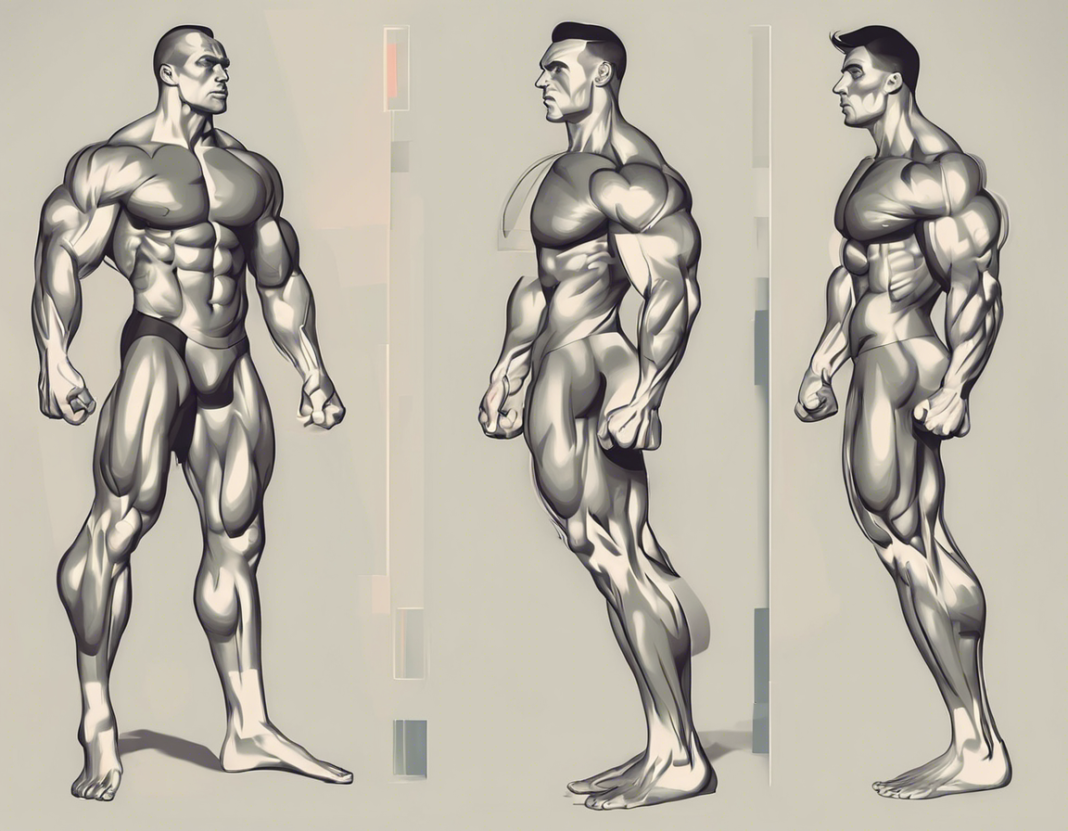The Bottom Line:
- Building muscle effectiveness tested with heavy weights vs. lightweights
- Understanding the repetition Continuum for muscle growth
- Different stimuli for muscle growth: heavy tension, Ecentric overload, metabolic stress
- Importance of reaching failure for effective muscle building
- Recommendation to incorporate both heavy and light work for optimal muscle growth
Heavy Weights vs Lightweights: The Debate Unveiled
The Repetition Continuum: Understanding Muscle Growth Stimuli
When it comes to the debate between heavy weights and lightweights for optimal muscle growth, the key lies in understanding the repetition continuum. Different rep ranges offer varying stimuli for muscle growth.
Research Backs All Rep Ranges for Muscle Building
Studies have shown that muscle growth can be stimulated across a wide range of loading spectrums, from heavy tension in lower rep ranges to metabolic stress in higher repetitions. Dr. Brad Schoenfeld’s research highlights the effectiveness of different loading schemes for muscle hypertrophy.
The Importance of Variety in Training
While there is merit in both heavy and light training, the key is to incorporate a variety of rep ranges to maximize muscle growth potential. It’s recommended to distribute your workload across moderate, heavy, and lightweight ranges to stimulate all aspects of muscle development.
The Repetition Continuum: A Critical Analysis
Examining the Repetition Continuum
The concept of the repetition continuum is crucial in determining the effectiveness of different rep ranges for muscle growth. Understanding how various rep ranges stimulate muscle growth is key to optimizing your workouts.
Scientific Insights on Muscle Building
Recent studies have highlighted that muscle growth can be triggered across a broad range of loading spectrums. From heavy tension in lower rep ranges to metabolic stress in higher repetitions, different loading schemes have shown efficacy in promoting muscle hypertrophy.
Dr. Brad Schoenfeld’s research has underscored the importance of incorporating diverse rep ranges in training to maximize overall muscle development potential.
Application of Training Variety
While there are merits to both heavy and light training approaches, the key lies in diversifying your rep ranges. By distributing your workload across moderate, heavy, and lightweight ranges, you can effectively stimulate all facets of muscle growth and achieve optimal results.
Optimizing Muscle Growth: Balancing Heavy and Light Weights
Understanding the Role of Heavy Weights
Heavy weights play a crucial role in muscle growth by providing high tension to stimulate muscle fibers. Lower rep ranges with heavy weights can create an environment for muscle hypertrophy by challenging the muscles with maximal loads.
The Benefits of Lightweights for Muscle Growth
On the other hand, lightweights can also be effective for muscle growth when used strategically. Higher rep ranges with lighter weights can induce metabolic stress and promote muscle endurance, contributing to overall muscle development.
Striking a Balance for Optimal Results
To optimize muscle growth, it is essential to strike a balance between heavy and light weights in your training regimen. Incorporating both heavy lifting for strength and lightweights for endurance can provide a comprehensive approach to enhancing muscle size and strength.
The Role of Intensity: Reaching True Failure for Results
The Significance of Intensity in Muscle Growth
One of the key factors in optimizing muscle growth is the intensity of your workouts. Reaching true failure during your sets is crucial for eliciting the desired results. True failure occurs when you cannot perform another repetition with proper form, pushing your muscles to their limit.
Understanding the Repetition Continuum for Results
Applying the concept of the repetition continuum is essential in achieving optimal muscle growth. Different rep ranges offer unique stimuli for muscle development, ranging from heavy tension in lower rep ranges to metabolic stress in higher repetitions. Dr. Brad Schoenfeld’s research emphasizes the importance of incorporating diverse rep ranges to enhance muscle hypertrophy.
The Importance of Proper Application and Training Variety
To maximize muscle growth potential, it is essential to vary your training approach and incorporate different rep ranges. By distributing your workload across moderate, heavy, and lightweight ranges, you can effectively stimulate muscle fibers and promote overall muscle development. Striking a balance between heavy and lightweights in your training regimen is key to achieving optimal results.
The Ideal Workout Split: Integrating Heavy and Light Weight Training
Optimizing Muscle Growth with Heavy and Light Weight Training
When it comes to maximizing muscle growth, incorporating both heavy weights and lightweights into your workout routine can be highly beneficial. Each type of weight training offers unique advantages that contribute to overall muscle development.
The Role of Heavy Weights in Muscle Growth
Heavy weights are essential for providing high tension that stimulates muscle fibers. Lower rep ranges with heavy weights challenge the muscles with maximal loads, creating an environment conducive to muscle hypertrophy.
Harnessing the Benefits of Lightweights for Muscle Growth
Lightweights can also be effective in promoting muscle growth when strategically incorporated into your training regimen. Higher rep ranges with lighter weights induce metabolic stress and enhance muscle endurance, contributing to holistic muscle development.
Striking a Balance for Optimal Results
To achieve optimal muscle growth, it is crucial to strike a balance between heavy and light weights in your workouts. By integrating both heavy lifting for strength and lightweights for endurance, you can adopt a comprehensive approach to enhancing muscle size and strength.





